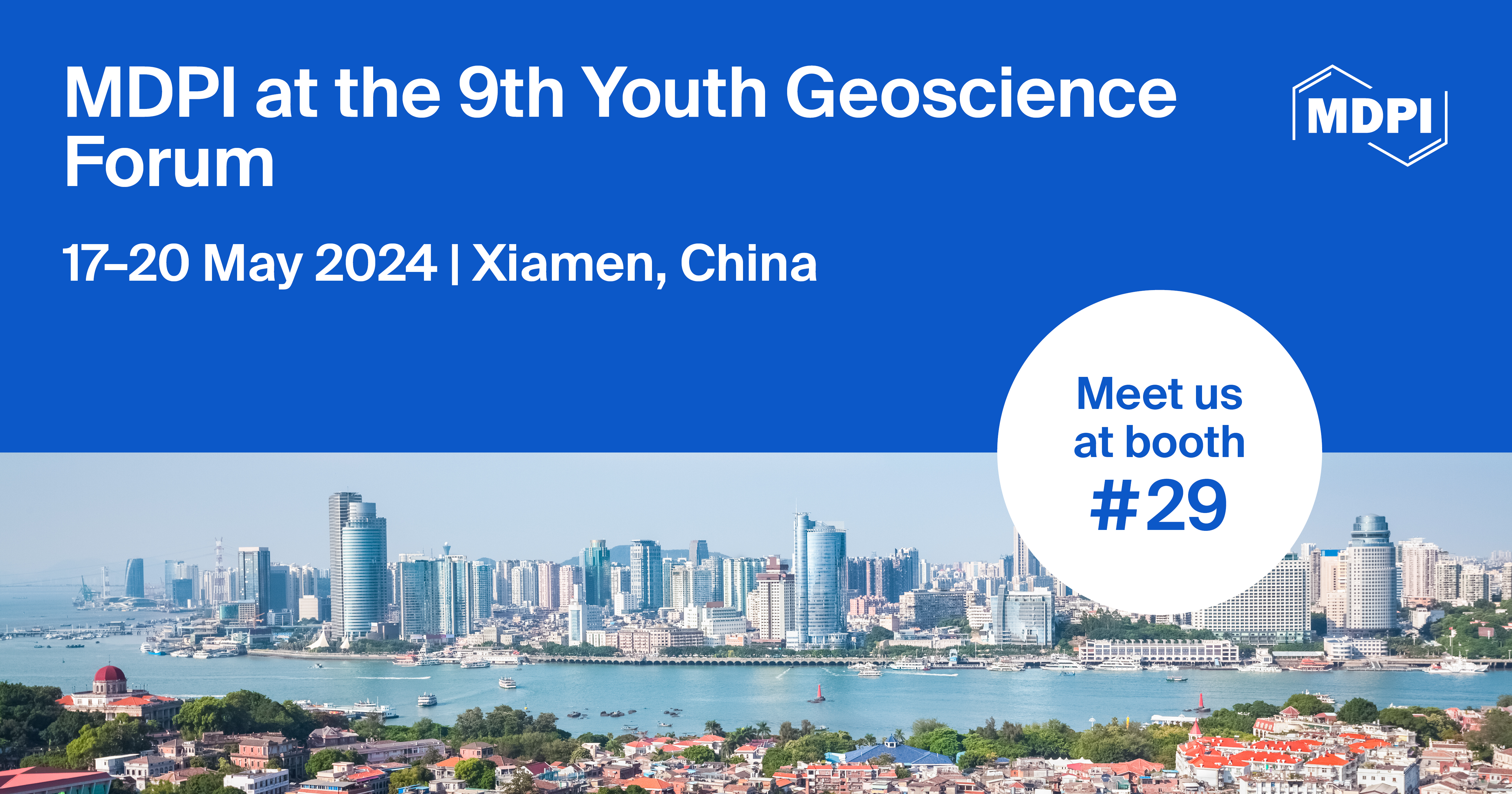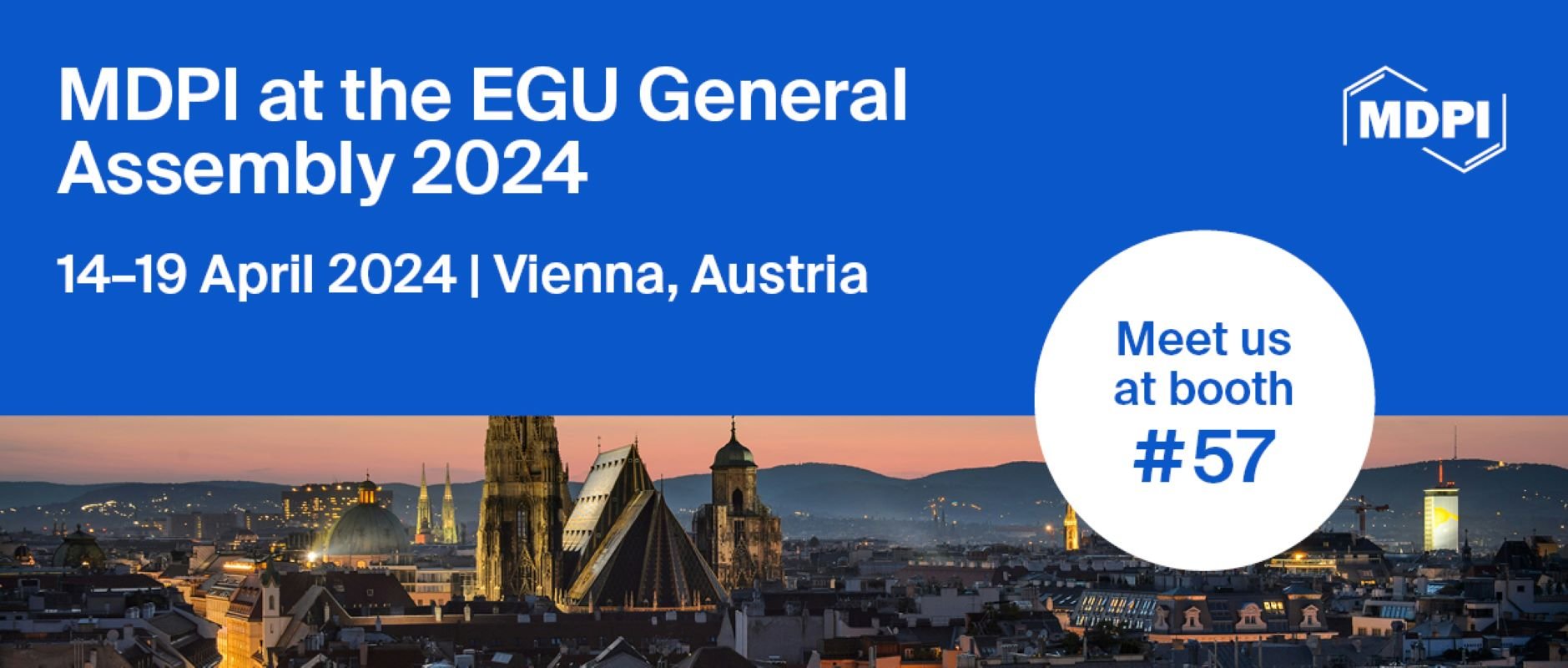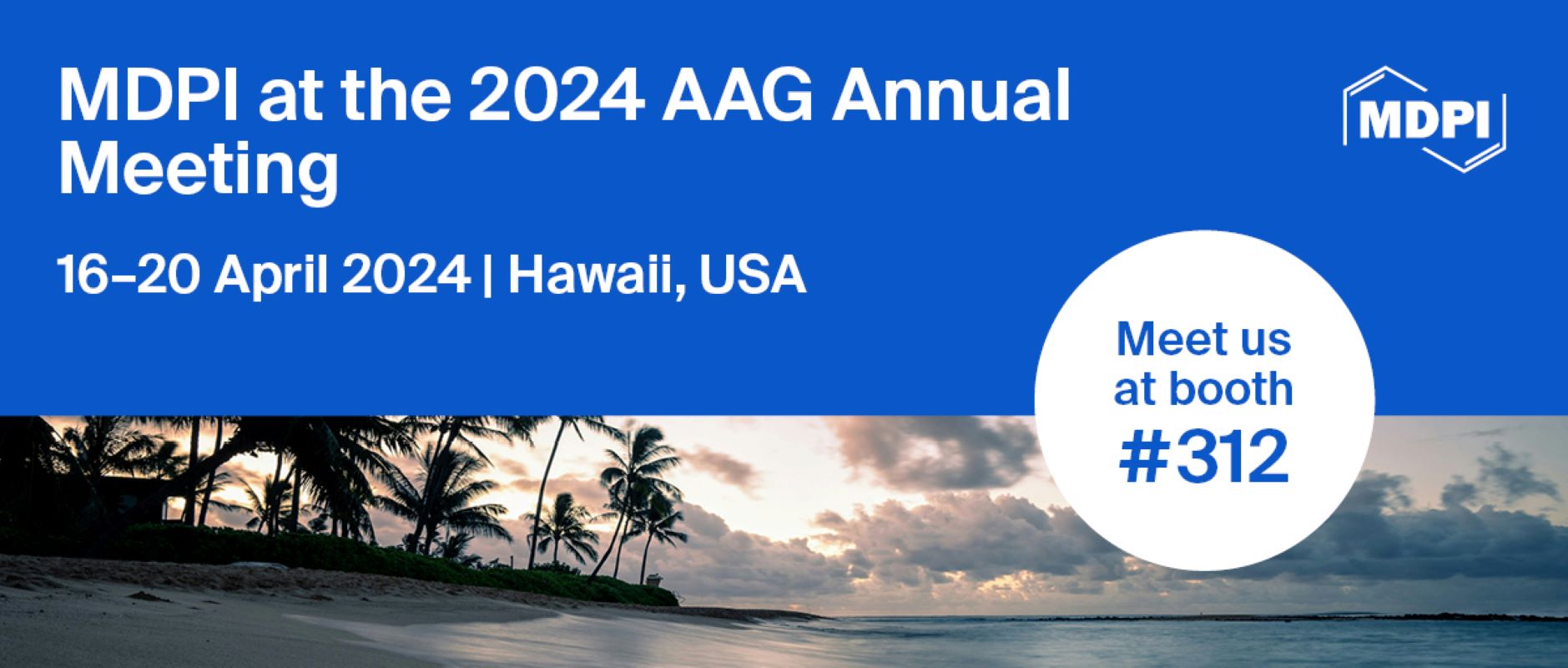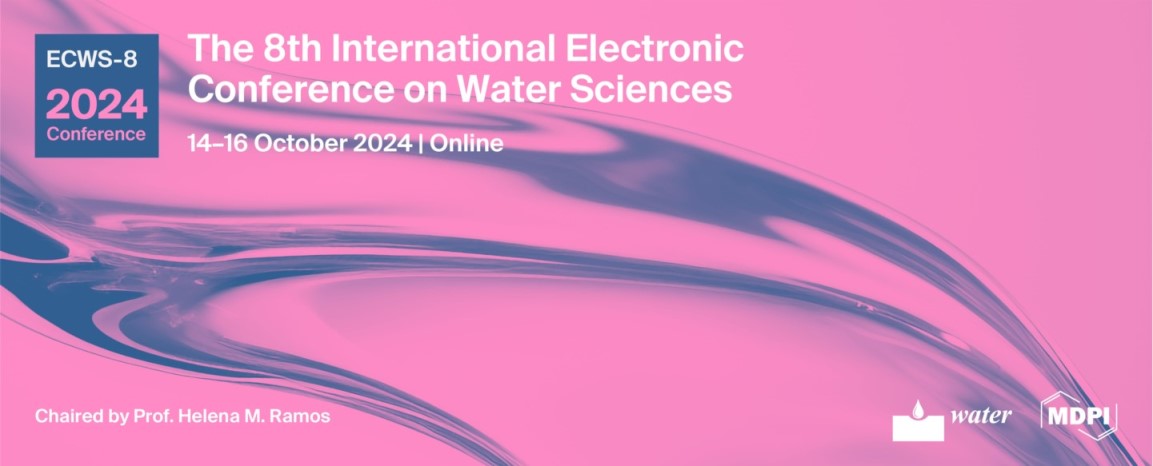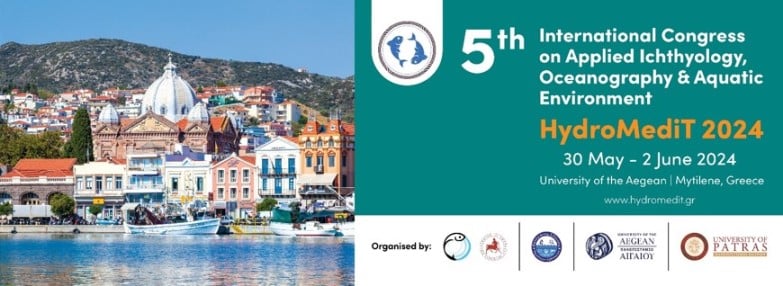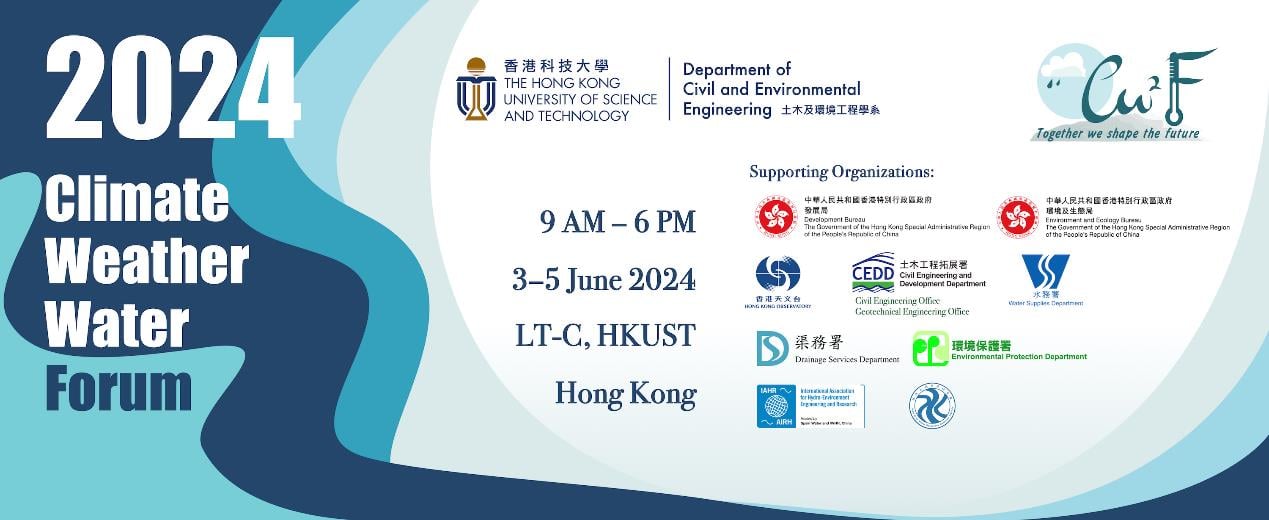-
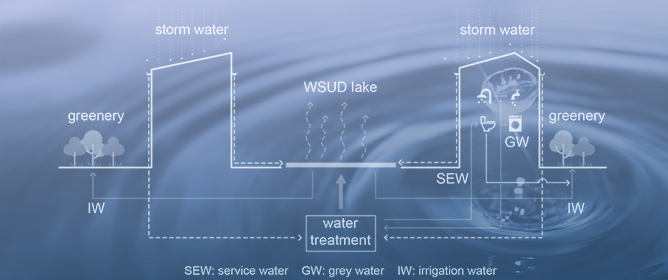 From District to City Scale: The Potential of Water-Sensitive Urban Design (WSUD)
From District to City Scale: The Potential of Water-Sensitive Urban Design (WSUD) -
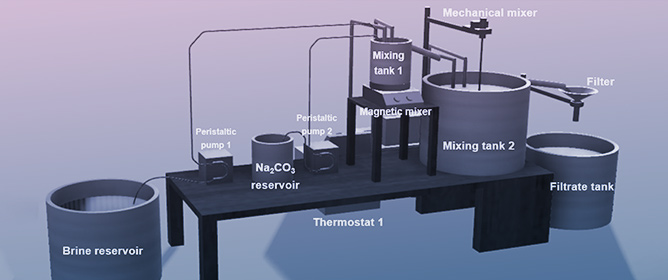 Selective Calcium Removal at Near-Ambient Temperature in a Multimineral Recovery Process from Seawater Reverse Osmosis Synthetic Brine and Ex Ante Life Cycle Assessment
Selective Calcium Removal at Near-Ambient Temperature in a Multimineral Recovery Process from Seawater Reverse Osmosis Synthetic Brine and Ex Ante Life Cycle Assessment -
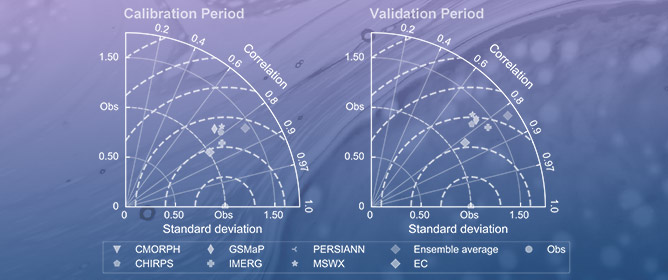 Enhanced Runoff Modeling by Incorporating Information from the GR4J Hydrological Model and Multiple Remotely Sensed Precipitation Datasets
Enhanced Runoff Modeling by Incorporating Information from the GR4J Hydrological Model and Multiple Remotely Sensed Precipitation Datasets -
 Marine Copepods as a Microbiome Hotspot: Revealing Their Interactions and Biotechnological Applications
Marine Copepods as a Microbiome Hotspot: Revealing Their Interactions and Biotechnological Applications
Journal Description
Water
Water
is a peer-reviewed, open access journal on water science and technology, including the ecology and management of water resources, and is published semimonthly online by MDPI. Water collaborates with the International Conference on Flood Management (ICFM) and Stockholm International Water Institute (SIWI). In addition, the American Institute of Hydrology (AIH), The Polish Limnological Society (PLS) and Japanese Society of Physical Hydrology (JSPH) are affiliated with Water and their members receive a discount on the article processing charges.
- Open Access— free for readers, with article processing charges (APC) paid by authors or their institutions.
- High Visibility: indexed within Scopus, SCIE (Web of Science), Ei Compendex, GEOBASE, GeoRef, PubAg, AGRIS, CAPlus / SciFinder, Inspec, and other databases.
- Journal Rank: JCR - Q2 (Water Resources) / CiteScore - Q1 (Water Science and Technology)
- Rapid Publication: manuscripts are peer-reviewed and a first decision is provided to authors approximately 16.5 days after submission; acceptance to publication is undertaken in 2.9 days (median values for papers published in this journal in the second half of 2023).
- Recognition of Reviewers: reviewers who provide timely, thorough peer-review reports receive vouchers entitling them to a discount on the APC of their next publication in any MDPI journal, in appreciation of the work done.
- Companion journals for Water include: GeoHazards and Hydrobiology.
Impact Factor:
3.4 (2022);
5-Year Impact Factor:
3.5 (2022)
Latest Articles
Analysis of Self-Rescue Possibilities for Pedestrians in the Aftermath of Destabilization during a Flood Event
Water 2024, 16(9), 1218; https://doi.org/10.3390/w16091218 - 24 Apr 2024
Abstract
Human safety is paramount in flood disasters. Current research indicates that the majority of fatalities in such disasters are due to people moving in water. Existing studies on human stability in floods have primarily focused on the static resistance of a standing posture
[...] Read more.
Human safety is paramount in flood disasters. Current research indicates that the majority of fatalities in such disasters are due to people moving in water. Existing studies on human stability in floods have primarily focused on the static resistance of a standing posture against water flow, neglecting the realistic scenario where people need to move and attempt self-rescue in the aftermath of destabilization. This paper introduces an analysis of the stability during the self-rescue process following a fall in floodwaters, providing insights into the baseline risks of human impact in floods. The self-rescue process is defined as the recovery to a standing position after a fall, segmented into four postures: sitting, kneeling, squatting, and standing. Additionally, considering the significant variability of the current method (
(This article belongs to the Section Hydrogeology)
►
Show Figures
Open AccessArticle
Impacts of Extreme Climate on the Water Resource System in Sichuan Province
by
Fang Ma and Zhijun Li
Water 2024, 16(9), 1217; https://doi.org/10.3390/w16091217 - 24 Apr 2024
Abstract
Based on the data of Sichuan Province from 2007 to 2021, the extreme climate events in Sichuan Province was identified by statistical method, and the coupling coordination degree of water resources-climate system and separate water resource system was analyzed. Based on the difference
[...] Read more.
Based on the data of Sichuan Province from 2007 to 2021, the extreme climate events in Sichuan Province was identified by statistical method, and the coupling coordination degree of water resources-climate system and separate water resource system was analyzed. Based on the difference of coupling coordination degree under these two systems, the influence mechanism of extreme climate factors on the water resource system is analyzed. The results show that the extreme climate types in Sichuan Province gradually transition from extreme drought to extreme precipitation and from extreme low temperature to extreme high temperature. When climate factors are not considered, the coupling coordination degree of the water resource system is generally improved and the distribution is more concentrated. Moreover, the influence of climate factors on the water resource system is not a simple linear relationship.
Full article
(This article belongs to the Section Water and Climate Change)
►▼
Show Figures
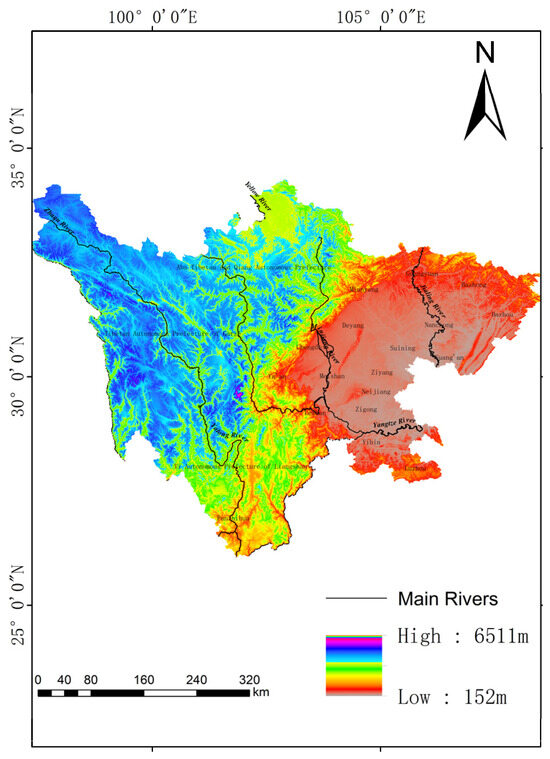
Figure 1
Open AccessReview
Recent Issues and Challenges in the Study of Inland Waters
by
Ryszard Staniszewski, Beata Messyasz, Piotr Dąbrowski, Pawel Burdziakowski and Marcin Spychała
Water 2024, 16(9), 1216; https://doi.org/10.3390/w16091216 - 24 Apr 2024
Abstract
This paper addresses several important problems and methods related to studies of inland waters based on the existing scientific literature. The use of UAVs in freshwater monitoring is described, including recent contact and non-contact solutions. Due to a decline in biological diversity in
[...] Read more.
This paper addresses several important problems and methods related to studies of inland waters based on the existing scientific literature. The use of UAVs in freshwater monitoring is described, including recent contact and non-contact solutions. Due to a decline in biological diversity in many parts of the globe, the main threats are described together with a modern method for algae and cyanobacteria monitoring utilizing chlorophyll a fluorescence. Observed disturbances in the functioning of river biocenoses related to mine waters’ discharge, causing changes in the physico-chemical parameters of waters and sediments, give rise to the need to develop more accurate methods for the assessment of this phenomenon. Important problems occurring in the context of microplastic detection, including the lack of unification, standardization and repeatability of the methods used, were described. In conclusion, accurate results in the monitoring of water quality parameters of inland waters can be achieved by combining modern methods and using non-contact solutions.
Full article
(This article belongs to the Special Issue Impacts of Climate Change and Anthropogenic Pressure on Freshwater Ecosystems)
Open AccessArticle
The Hydrogeochemistry of and Earthquake-Related Chemical Variations in the Springs along the Eastern Kunlun Fault Zone, China
by
Chao Lu, Xiaocheng Zhou, Jiyi Jiang, Jingchao Li, Jing Li, Jing Wu, Xiaoyi Zhu, Jiang Li, Gaoyuan Xing and Shihan Cui
Water 2024, 16(9), 1215; https://doi.org/10.3390/w16091215 - 24 Apr 2024
Abstract
The Eastern Kunlun Fault (EKF) is situated in an area with a history of significant seismic events, yet it has witnessed a dearth of major earthquakes in recent years. This study conducted a detailed analysis of the hydrogeochemical characteristics of the springs in
[...] Read more.
The Eastern Kunlun Fault (EKF) is situated in an area with a history of significant seismic events, yet it has witnessed a dearth of major earthquakes in recent years. This study conducted a detailed analysis of the hydrogeochemical characteristics of the springs in the EKF and their temporal variation, aiming to address the gaps in the research on the hydrogeochemistry in the region and to investigate the changes in water chemistry during the seismogenic process. In this study, the main elements, trace elements, hydrogen isotopes, oxygen isotopes, and strontium isotopes of 23 springs in the EKF were analyzed. The results indicated that the groundwater recharge in the eastern part of the Eastern Kunlun Fault Zone mainly originates from atmospheric precipitation, as supported by its isotopic characteristics. The spring water is immature, showing weak water–rock interactions. A hydrochemical analysis classified the springs into 11 main types, reflecting varying degrees of water–rock interaction. Based on measurements using quartz geothermometers, the estimated geothermal reservoir temperatures ranged from 39.6 to 120.3 °C, with circulation depths of 1.3 to 3.8 km. By means of regularly monitoring three selected springs, this study also explored the relationship between earthquakes and hot spring chemical variations. Finally, a conceptual model of hydrogeochemistry was proposed to describe the groundwater circulation in the study area.
Full article
Open AccessArticle
The Application of Sand Transport with Cohesive Admixtures Model for Predicting Flushing Flows in Channels
by
Leszek M. Kaczmarek, Jerzy Zawisza, Iwona Radosz, Magdalena Pietrzak and Jarosław Biegowski
Water 2024, 16(9), 1214; https://doi.org/10.3390/w16091214 - 24 Apr 2024
Abstract
The feature of self-cleansing in sewer pipes is a standard requirement in the design of drainage systems, as sediments deposited on the channel bottom cause changes in channel geometric properties and in hydrodynamic parameters, including the friction caused by the cohesive forces of
[...] Read more.
The feature of self-cleansing in sewer pipes is a standard requirement in the design of drainage systems, as sediments deposited on the channel bottom cause changes in channel geometric properties and in hydrodynamic parameters, including the friction caused by the cohesive forces of sediment fractions. Here, it is shown that the content of cohesive fractions significantly inhibits the transport of non-cohesive sediments. This paper presents an advanced calculation procedure for estimating flushing flows in channels. This procedure is based on innovative predictive models developed for non-cohesive and granulometrically heterogeneous sediment transport with additional cohesive fraction content to estimate the magnitude of increased flow necessary to ensure self-cleansing of channels. The computations according to the proposed procedure were carried out for a wide range of hydrodynamic conditions, two grain diameters, six cohesive (clay) fraction additive contents and two critical stress values. The trend lines of calculations were composed with the results of experimental studies in hydraulic flumes.
Full article
Open AccessReview
Overbank Flow, Sediment Transport, and Channel Morphology in the Lower Yellow River: A Review
by
Shasha Han, Lianjun Zhao, Ao Chang, Baichuan Liu, Jingwen Wang and Jie Li
Water 2024, 16(9), 1213; https://doi.org/10.3390/w16091213 - 24 Apr 2024
Abstract
As a prerequisite and foundation for studying the evolution mechanism of river channels, an in-depth understanding of the cross-sectional morphology adjustment is required. As a starting point, it is crucial to systematically summarize and generalize the research findings on channel morphological adjustment obtained
[...] Read more.
As a prerequisite and foundation for studying the evolution mechanism of river channels, an in-depth understanding of the cross-sectional morphology adjustment is required. As a starting point, it is crucial to systematically summarize and generalize the research findings on channel morphological adjustment obtained to date, particularly in the context of the significant changes in the water and sediment conditions of large rivers that have occurred worldwide. This paper provides a comprehensive review of the research findings on the three following aspects of the Lower Yellow River: the transverse distribution of overbank flow velocity, the transverse distribution of suspended sediment concentration, and the morphological adjustment of the river cross-section. There are various equations available to predict the lateral depth–average flow velocity distribution. These equations are classified into the two following categories: empirical and theoretical formulas. Theoretical formulas are obtained through consideration of the cross-sectional morphology, accounting for inertial force terms caused by secondary flow, and momentum transfer between the main channel and its floodplain. Similarly, empirical equations and theoretical formulas for sediment concentration transverse distribution are also summarized, given the different influencing factors and assumptions. We also discuss the morphological adjustment of river cross-sections based on the analysis of measured data, mathematical model calculation, and the physical model test. In particular, we propose the idea of revealing channel cross-section morphology evolution mechanisms from the theoretical level of water and sediment movement and distribution. This review aims to enhance understanding of overbank flow, sediment transport, and channel morphology in the Lower Yellow River and may also serve to some extent as a reference for the evolution and management of channels in other rivers.
Full article
(This article belongs to the Special Issue River Modeling and Riverbed Evolution)
Open AccessArticle
The Diversity of Freshwater Stygobiotic Crustaceans in the Republic of North Ossetia–Alania Provides New Evidence for the Existence of an Ancient Glacial Refugium in the North Caucasus Region
by
Ivan N. Marin and Dmitry M. Palatov
Water 2024, 16(9), 1212; https://doi.org/10.3390/w16091212 - 24 Apr 2024
Abstract
A review and partial revision of the diversity of freshwater stygobiotic crustaceans in the territory of the Republic of North Ossetia–Alania, in the North Caucasus, is presented here. Previously, two species of the genus Proasellus Dudich, 1925 (Isopoda, Asellidae), P. uallagirus Palatov &
[...] Read more.
A review and partial revision of the diversity of freshwater stygobiotic crustaceans in the territory of the Republic of North Ossetia–Alania, in the North Caucasus, is presented here. Previously, two species of the genus Proasellus Dudich, 1925 (Isopoda, Asellidae), P. uallagirus Palatov & Sokolova, 2020 and P. irystonicus Palatov & Sokolova, 2020, and one species of the genus Niphargus Schiödte, 1849 (Amphipoda, Niphargidae), N. alanicus Marin & Palatov, 2021, were described from the hyporhean/underground habitats (hyporhea) in the area. However, further research using an integrative approach has revealed that only a single species of the genus Proasellus (P. uallagirus) is actually widely distributed in the hyporhean riverbed habitats in the area, while the diversity of the genus Niphargus is higher than previously known. Six more new Niphargus species— namely, N. ardonicus sp. nov., N. sadonicus sp. nov., N. fiagdonicus sp. nov., N. tschertschesovae sp. nov., N. osseticus sp. nov. and N. zeyensis sp. nov., were discovered from the various hypogean underground water sources (i.e., springs and seeps) and are described in this article. Their phylogenetic relationships with their congeners, as well as their ecology and known distribution, are discussed. Furthermore, molecular genetic analysis, with an interpretation of the estimated divergence time, suggests that the studied hyporheic/stygobiotic crustaceans started to diverge from related European and Balkan sister species during the Late Miocene, approximately 8–5.8 Mya, with the reduction in the Paratethys and the uplifting of the Caucasus Mountains. Local speciation was led by local geological processes and karst fragmentation during the Late Pliocene and Early Pleistocene periods, starting around 5.3 Mya. The obtained data suggest that the mountainous area of the North Ossetia–Alania could be considered as a post-Pliocene glacial refugium for subterranean and stygobiotic fauna—the first known for the North Caucasus region.
Full article
(This article belongs to the Special Issue Biogeography and Speciation of Aquatic Organisms)
Open AccessArticle
Prevention of Water Seepage Impact on the Soluble Rocks Using Colloidal Silica
by
Aram Aziz, Abbas Soroush, Seyed Mohammad Fattahi, Reza Imam and Mehrdad Ghahremani
Water 2024, 16(9), 1211; https://doi.org/10.3390/w16091211 - 24 Apr 2024
Abstract
Water seepage flow can dissolve soluble minerals that exist in rock formations. With the development of the excavated area due to dissolution, the water seepage velocity (discharge) into the dissolved rock will also increase. Therefore, water seepage and dissolution propagation are two interrelated
[...] Read more.
Water seepage flow can dissolve soluble minerals that exist in rock formations. With the development of the excavated area due to dissolution, the water seepage velocity (discharge) into the dissolved rock will also increase. Therefore, water seepage and dissolution propagation are two interrelated processes. Mosul Dam foundation has experienced these processes since its construction, resulting in karstification in the reservoir and foundation of the dam. The present seepage-dissolution measure to minimize this phenomenon relies on traditional cementitious grouts. However, this measure has not been able to address the issue effectively. Currently, there are a few studies on the chemical remediation of soluble rocks under the influence of high-velocity water flow and water pressure. Therefore, the first part of the current study focuses on the impact of high-velocity water flow and water pressure on the dissolution acceleration of gypsum/anhydrite rocks. In the second part, the waterproof capacity of silica colloidal and its impact on the solubility reduction of the rocks is evaluated. Two distinct laboratory models were designed to simulate rock dissolution in the dam abutments and under the dam. Two sets of experiments were conducted on untreated and silica-treated samples. The experiments were executed on the samples extracted from Fatha Formation outcrop and problematic layers of brecciated gypsum situated at varying depths of the Mosul Dam foundation. The obtained findings reveal that the colloidal silica grout markedly prevents the water seepage impact on the soluble rock and that it can be very useful as an alternative to cement-based grouts.
Full article
(This article belongs to the Special Issue Renewable Energy System Flexibility for Water Desalination: Volume II)
►▼
Show Figures
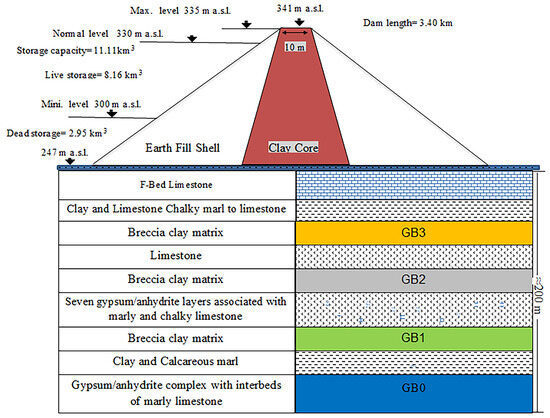
Figure 1
Open AccessArticle
Geochemical Surveys of Ground and Surface Waters in the Abandoned Hg-Mine of Abbadia San Salvatore (Central Italy): A Preparatory Investigation before Remediation
by
Federica Meloni, Giordano Montegrossi, Jacopo Cabassi, Francesco Bianchi, Barbara Nisi, Daniele Rappuoli and Orlando Vaselli
Water 2024, 16(9), 1210; https://doi.org/10.3390/w16091210 - 24 Apr 2024
Abstract
Since 2013, 34 surveys of surface and ground waters within and outside the former Hg-mine of Abbadia San Salvatore (Italy), which is currently under remediation, were performed for determining Hg, As, Sb, and main and minor solutes. The water quality is rather poor
[...] Read more.
Since 2013, 34 surveys of surface and ground waters within and outside the former Hg-mine of Abbadia San Salvatore (Italy), which is currently under remediation, were performed for determining Hg, As, Sb, and main and minor solutes. The water quality is rather poor since most waters show relatively high Hg concentrations (up to 695 µg/L). Differently, As and Sb only overcome the Italian law thresholds in a few sites. A high geochemical variability was observed for most groundwaters without any clear relationship between wet and dry periods. The main source of chalcophile elements is likely related to: (i) the interaction between meteoric waters and soils contaminated by the previous production of mercury; or (ii) the interaction between meteoric waters and the anthropic filling material of a former paleo-valley near the furnaces edifices. While the remediation is expected to be concluded in 2025, the aquifer contamination still remains a problem. Our investigation, including geochemical/hydrogeological modeling, is prodromal to future activities aimed at reducing the Hg content. Currently, the construction of a hydraulic barrier is apparently the most suitable solution to minimize the interaction processes between water–rock and man-made material, which are responsible for the 10-year concentration variability.
Full article
(This article belongs to the Special Issue Application of Integrated Geophysical, Hydrogeological and Geospatial Approach to Groundwater Exploration and Contamination)
►▼
Show Figures

Figure 1
Open AccessArticle
Determination of Heavy Metal Sources in an Agricultural Catchment (Poland) Using the Fingerprinting Method
by
Damian Bojanowski
Water 2024, 16(9), 1209; https://doi.org/10.3390/w16091209 - 24 Apr 2024
Abstract
This study investigates the heavy metal contamination of soils and suspended sediments in the Nurzec River catchment (Eastern Poland), focusing in particular on the effects of catchment land use. The fingerprinting technique has been combined with the classic, Igeo, and EF
[...] Read more.
This study investigates the heavy metal contamination of soils and suspended sediments in the Nurzec River catchment (Eastern Poland), focusing in particular on the effects of catchment land use. The fingerprinting technique has been combined with the classic, Igeo, and EF index-supported contamination analysis to identify heavy metals sources. A wide range of elements (31 chemical elements including heavy metals) allowed the author to analyse the pathways and to identify the pressures of heavy metal contamination. The developed statistical models of heavy metal source distribution displayed results at a statistically significant level. The results have revealed the significant impact of land use connected with urban areas (URBAN) and pastures (PAST), which together constitute less than 20% of the river catchment area. These results are relevant to the local authorities and stakeholders, as they highlight the significant impact of low-density urban areas that are not locally considered as the major sources of heavy metal pollution. These results will contribute to sustainable decisions in the field of contaminated catchment area remediation.
Full article
(This article belongs to the Special Issue Soil Dynamics and Water Resource Management)
►▼
Show Figures
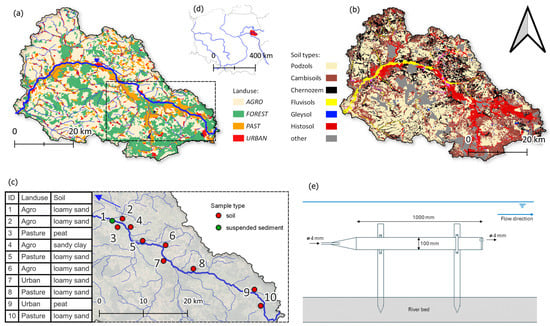
Figure 1
Open AccessArticle
The Enhanced Adsorption Capacity of Ziziphus jujuba Stones Modified with Ortho-Phosphoric Acid for Organic Dye Removal: A Gaussian Process Regression Approach
by
Abderraouf Guediri, Abdallah Bouguettoucha, Hichem Tahraoui, Derradji Chebli, Jie Zhang, Abdeltif Amrane, Lotfi Khezami and Amin Aymen Assadi
Water 2024, 16(9), 1208; https://doi.org/10.3390/w16091208 - 24 Apr 2024
Abstract
Here, the chemical modification of Ziziphus jujuba stones (ZJS) treated with ortho-phosphoric acid (ZJS-H3PO4) is investigated to enhance its adsorption properties for organic dyes. The physicochemical properties of ZJS-H3PO4 reveal increased porosity (87.29%), slightly higher bulk
[...] Read more.
Here, the chemical modification of Ziziphus jujuba stones (ZJS) treated with ortho-phosphoric acid (ZJS-H3PO4) is investigated to enhance its adsorption properties for organic dyes. The physicochemical properties of ZJS-H3PO4 reveal increased porosity (87.29%), slightly higher bulk density (0.034 g mL−1), and enhanced acidity (31.42 m eq g g−1) compared to untreated ZJS. XRF analysis confirms the successful incorporation of orthophosphoric acid during treatment due to a significant increase in phosphorus content. The maximum adsorption capacity of methylene blue on ZJS-H3PO4 is found to be 179.83 mg g−1, demonstrating its efficacy as a potential adsorbent for organic dyes. These findings suggest that modifying ZJS with orthophosphoric acid could be a promising strategy to enhance its adsorption performance in various environmental applications. Furthermore, Gaussian process regression (GPR) is employed to model MB adsorption by ZJS-H3PO4. Optimization of the GPR model involves evaluating different kernel functions and meticulously adjusting parameters to maximize its ability to capture complex relationships in the data. The obtained GPR model demonstrates remarkable performance with high correlation coefficients (R) and low root mean square errors (RMSEs) across all study phases. Model validation is performed through residual analysis, confirming its effectiveness and accuracy in predicting MB adsorption. Finally, a user-friendly interface is developed to facilitate the usage of the GPR model in future applications, representing a significant advancement in environmental process modeling and ecosystem management.
Full article
(This article belongs to the Section Wastewater Treatment and Reuse)
►▼
Show Figures
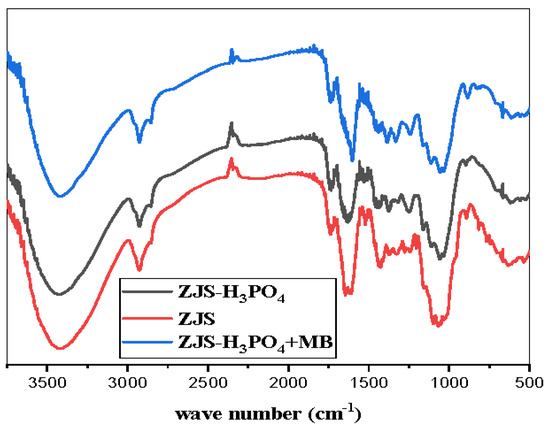
Figure 1
Open AccessArticle
Spatio-Temporal Prediction of Three-Dimensional Stability of Highway Shallow Landslide in Southeast Tibet Based on TRIGRS and Scoops3D Coupling Model
by
Jiarui Mao, Xiumin Ma, Haojie Wang, Liyun Jia, Yao Sun, Bin Zhang and Wenhui Zhang
Water 2024, 16(9), 1207; https://doi.org/10.3390/w16091207 - 24 Apr 2024
Abstract
National Highway G559 is the first highway in Southeast Tibet into Motuo County, which has not only greatly improved the difficult situation of local roads, but also promoted the economic development of Tibet. However, rainfall-induced shallow landslides occur frequently along the Bomi–Motuo section,
[...] Read more.
National Highway G559 is the first highway in Southeast Tibet into Motuo County, which has not only greatly improved the difficult situation of local roads, but also promoted the economic development of Tibet. However, rainfall-induced shallow landslides occur frequently along the Bomi–Motuo section, which seriously affects the safe operation and construction work of the highway. Therefore, it is urgent to carry out geological disaster assessment and zoning along the highway. Based on remote-sensing interpretation and field investigation, the distribution characteristics and sliding-prone rock mass of shallow landslides along the Bomi–Motuo Highway were identified. Three-dimensional stability analysis of regional landslides along the Bomi-Motuo Highway under different rainfall scenarios was carried out based on the TRIGRS and Scoops3D coupled model (T-S model). The temporal and spatial distribution of potential rainfall landslides in this area is effectively predicted, and the reliability of the predicted results is also evaluated. The results show that: (1) The slope structure along the highway is mainly composed of loose gravel soil on the upper part and a strong weathering layer of bedrock on the lower part. The sliding surface is mostly a circular and plane type, and the main failure types are creep–tensile failure and flexural–tensile failure. (2) Based on the T-S coupling model, it is predicted that the potential landslide along the Bomi–Motuo Highway in the natural state is scattered. The distribution area of extremely unstable and unstable areas accounts for 4.92% of the total area. In the case of extreme rainfall once in a hundred years, the proportion of instability area (Fs < 1) predicted by the T-S coupling model 1 h after rainfall is 7.74%, which is 1.57 times that of the natural instability area. The instability area (Fs < 1) accounted for 43.40% of the total area after 12 h of rainfall. The potential landslides were mainly distributed in the Bangxin–Zhamu section and the East Gedang section. (3) The TRIGRS and T-S coupling model is both suitable for predicting the temporal–spatial distribution of rainfall-induced shallow landslides, but the TRIGRS model has the problem of over-prediction. The instability area predicted by the T-S coupling model accounted for 43.30%, and 74% of the historical landslide disaster points in the area were correctly predicted. (4) In terms of rainfall response, the T-S coupling model shows higher sensitivity. The %LRclass (Fs < 1) index of the T-S coupling model is above 50% in different time periods, and its landslide-prediction effect (%LRclass = 78.80%) was significantly better than that of the one-dimensional TRIGRS model (%LRclass = 45.50%) under a 12 h rainfall scenario. The research results have important reference significance for risk identification and disaster reduction along the G559 Bomi–Motuo Highway.
Full article
(This article belongs to the Special Issue Assessment of the Rainfall-Induced Landslide Distribution)
►▼
Show Figures
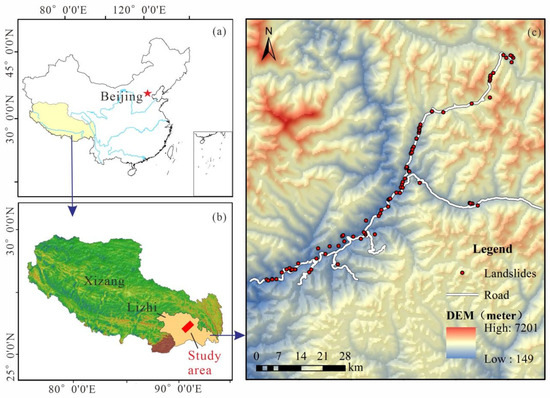
Figure 1
Open AccessArticle
Windows into the Recent Past: Simple Biotic Indices to Assess Hydrological Stability in Small, Isolated Ponds
by
Paweł Koperski
Water 2024, 16(9), 1206; https://doi.org/10.3390/w16091206 - 24 Apr 2024
Abstract
►▼
Show Figures
This article presents the four biotic indices used to assess the hydrological stability of small, fishless, lowland ponds in northern Poland’s post-glacial landscape. The assessment was based on the analyses of the relative abundance of selected macroinvertebrate taxa caught using standard and non-lethal
[...] Read more.
This article presents the four biotic indices used to assess the hydrological stability of small, fishless, lowland ponds in northern Poland’s post-glacial landscape. The assessment was based on the analyses of the relative abundance of selected macroinvertebrate taxa caught using standard and non-lethal methods. The indices were derived from a multi-year analysis of data on invertebrate composition, abiotic water parameters, and publicly available satellite data. This allowed for the reconstruction of hydrological stability, including fluctuations in water level and surface area, as well as the frequency of drying, in small water bodies in the 5–10 years before sampling. The numerical relationships between the parameters describing hydrological stability and the relative abundance of several invertebrate taxa were described. A multiple regression analysis showed that hydrological stability was generally more strongly related to faunal composition than the other abiotic parameters. The indices used in this study can be a useful tool, particularly in citizen science. It is important that their numerical bases can be easily modified depending on the local conditions.
Full article

Graphical abstract
Open AccessArticle
Impact of Meadow Degradations on the Probabilistic Distribution Patterns of Physical and Mechanical Indices of Rooted Soil in the Upper Regions of the Yellow River, China
by
Jiang-Tao Fu, Xia-Song Hu, Xi-Lai Li, Ji-Mei Zhao, Guang-Yan Xing and Chang-Yi Liu
Water 2024, 16(9), 1205; https://doi.org/10.3390/w16091205 - 24 Apr 2024
Abstract
►▼
Show Figures
The shear strength (particularly soil cohesion) of rooted soil is an important parameter that reflects the true erodibility of meadows, particularly in meadows experiencing different degrees of degradation, ranging from undegraded (UD) through to lightly degraded (LD) and from moderately degraded (MD) to
[...] Read more.
The shear strength (particularly soil cohesion) of rooted soil is an important parameter that reflects the true erodibility of meadows, particularly in meadows experiencing different degrees of degradation, ranging from undegraded (UD) through to lightly degraded (LD) and from moderately degraded (MD) to heavily degraded (HD). The cohesion of rooted soil is controlled not only by the soil moisture content and its natural density, but also by roots (including not only their density, spatial distribution, and diameters, but also their tensile strength). This study aimed to improve the current understanding of the erosion resistance of rooted soil and elucidate the impact of meadow degradation on the physical–mechanical indices of rooted soil. Based on this discussion, a one-way analysis of variance was performed at significance levels of 0.05 and 0.01 to test the impact of degradation on the physical–mechanical indices of rooted soil across degradation. Furthermore, the probabilistic distributions of the physical–mechanical indices were described using normal, gamma, Weibull, and generalized extreme values (GEV). The Kolmogorov–Smirnov (KS) test was used to identify the optimal distribution based on p-values and the Pearson correlation coefficient was used to quantify the correlation between the cohesion of rooted soil and other indices. The one-way ANOVA indicated that the soil’s natural density and soil moisture content decreased firstly, followed by an increase, the root amount and cohesion decreased, the root content experienced an initial increasing and then decreasing trend, and the internal friction angle exhibited a stepwise increasing trend. The four distributions sufficiently described the actual distribution of data on the physical–mechanical indices of rooted soil, except for the internal friction angle in UD and MD soils and the soil moisture content in MD soil. Additionally, the KS tests showed that the optimal distribution depended on both the physical–mechanical indices themselves and the degree of degradation. The Pearson correlation analysis showed that the correlation between cohesion and the other physical–mechanical indices varied considerably depending on the degree of degradation.
Full article
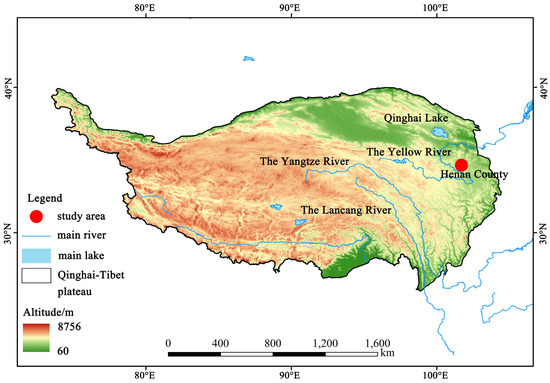
Figure 1
Open AccessArticle
Relationship of the “Dequada” Phenomenon with Mercury Methylation in Pantanal, Brazil
by
Glaucia A. Nunes, Dayana D. Ramos, Juliane C. Forti, Diovany D. Ramos, Lincoln C. S. Oliveira, David S. S. Junior, Gabriel E. Santo and Felipe A. Santos
Water 2024, 16(9), 1204; https://doi.org/10.3390/w16091204 - 24 Apr 2024
Abstract
The illegal activity of gold mining in the Brazilian Pantanal is contaminating the aquatic ecosystem with mercury. This contamination has been potentiated by mercury methylation due to a typical natural phenomenon of the Pantanal ecosystem known as “dequada”. The present study estimated in
[...] Read more.
The illegal activity of gold mining in the Brazilian Pantanal is contaminating the aquatic ecosystem with mercury. This contamination has been potentiated by mercury methylation due to a typical natural phenomenon of the Pantanal ecosystem known as “dequada”. The present study estimated in the laboratory the temporal production of methylmercury at two timepoints: the beginning of a flood, when the “dequada” phenomenon occurs, and the dry season without such phenomenon. After collecting water and sediment, experiments were performed with microcosms to reproduce conditions close to nature. To monitor the concentration of methylmercury, 1.0 mg L−1 of Hg2+ was added to water and sediment experiments in the Castelo and Saracura bays, both during the “dequada” and without it; monitoring lasted for 25 days. The methylmercury concentration was analyzed using atomic fluorescence spectrometry, total organic carbon using TOC 5000A, and physical and chemical parameters such as pH, redox potential, and dissolved oxygen with a multi-parameter probe. The results led to the conclusion that the “dequada” phenomenon significantly affected mercury methylation, because the environmental changes caused by this phenomenon such as the increased concentration of organic matter, decreased dissolved oxygen, and decreased pH, potentiated mercury methylation. During the “dequada” in the Castelo bay, the methylation rate was 3.5 times higher (6297.56 ng L−1) than in the experiment without the “dequada” (1827.44 ng L−1). Therefore, the gold mining activity in Pantanal can cause great damage to the ecosystem because this environment favors mercury methylation, making its most toxic form active in the aquatic ecosystem of Pantanal.
Full article
(This article belongs to the Special Issue Source, Occurrence, Pathway, and Fate of Heavy Metals in the Water Environment)
►▼
Show Figures

Graphical abstract
Open AccessArticle
Precipitation Changes on the Northern Slope of the Kunlun Mountains in the Past 42 Years
by
Zhenhua Xia, Yaning Chen, Xueqi Zhang, Zhi Li, Gonghuan Fang, Chengang Zhu, Yupeng Li, Jinglong Li, Qianqian Xia and Qixiang Liang
Water 2024, 16(9), 1203; https://doi.org/10.3390/w16091203 - 24 Apr 2024
Abstract
The precipitation on the northern slope of the Kunlun Mountains significantly impacts the green economy of the Tarim Basin’s southern edge. Observations have noted an expansion of the surface water area in this region, though the reasons for this are not yet fully
[...] Read more.
The precipitation on the northern slope of the Kunlun Mountains significantly impacts the green economy of the Tarim Basin’s southern edge. Observations have noted an expansion of the surface water area in this region, though the reasons for this are not yet fully understood. Due to limited instrumental data, this study leverages field measurements from the third Xinjiang comprehensive expedition and multiple gridded datasets. Through trend analysis and a geographical detector model, it examines the precipitation’s decadal, interannual, and seasonal variations across key areas (Hotan River Basin, Keriya River Basin, Qarqan River Basin, and Kumukuli Basin), identifying factors behind the spatial and temporal distribution of regional precipitation. The findings reveal the following: (1) An increase in annual precipitation across the region from 187.41 mm in the 1980s to 221.23 mm in the early 21st century, at a rate of 10.21 mm/decade, with the most significant rise in the eastern Kunlun-Kumukuli Basin. (2) Precipitation exhibits clear seasonal and spatial patterns, predominantly occurring in spring and summer, accounting for 90.27% of the annual total, with a general decrease from the mountains towards downstream areas. (3) Rising average annual temperatures contribute to an unstable atmospheric structure and increased water-holding capacity, facilitating precipitation. Significant influences on precipitation changes include the North Atlantic Oscillation and solar flux, explaining 43.98% and 31.21% of the variation, respectively.
Full article
(This article belongs to the Section Water and Climate Change)
►▼
Show Figures
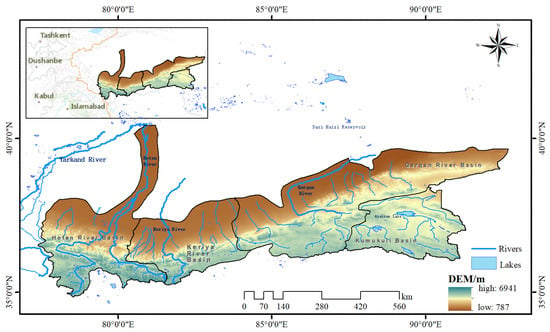
Figure 1
Open AccessArticle
Wetland Creation and Reforestation of Legacy Surface Mines in the Central Appalachian Region (USA): A Potential Climate-Adaptation Approach for Pond-Breeding Amphibians?
by
Lauren Sherman, Christopher D. Barton, Jacquelyn C. Guzy, Rebecca N. Davenport, John J. Cox, Jeffery L. Larkin, Todd Fearer, Jillian C. Newman and Steven J. Price
Water 2024, 16(9), 1202; https://doi.org/10.3390/w16091202 - 23 Apr 2024
Abstract
Habitat restoration and creation within human-altered landscapes can buffer the impacts of climate change on wildlife. The Forestry Reclamation Approach (FRA) is a coal surface mine reclamation practice that enhances reforestation through soil decompaction and the planting of native trees. Recently, wetland creation
[...] Read more.
Habitat restoration and creation within human-altered landscapes can buffer the impacts of climate change on wildlife. The Forestry Reclamation Approach (FRA) is a coal surface mine reclamation practice that enhances reforestation through soil decompaction and the planting of native trees. Recently, wetland creation has been coupled with FRA to increase habitat available for wildlife, including amphibians. Our objective was to evaluate the response of pond-breeding amphibians to the FRA by comparing species occupancy, richness, and abundance across two FRA age-classes (2–5-year and 8–11-year reclaimed forests), traditionally reclaimed sites that were left to naturally regenerate after mining, and in mature, unmined forests in the Monongahela National Forest (West Virginia, USA). We found that species richness and occupancy estimates did not differ across treatment types. Spotted Salamanders (Ambystoma maculatum) and Eastern Newts (Notophthalmus viridescens) had the greatest estimated abundances in wetlands in the older FRA treatment. Additionally, larger wetlands had greater abundances of Eastern Newts, Wood Frogs (Lithobates sylvaticus), and Green Frogs (L. clamitans) compared to smaller wetlands. Our results suggest that wetland creation and reforestation increases the number of breeding sites and promotes microhabitat and microclimate conditions that likely maximize the resilience of pond-breeding amphibians to anticipated climate changes in the study area.
Full article
(This article belongs to the Special Issue Restoration of Wetlands for Climate Change Mitigation)
►▼
Show Figures
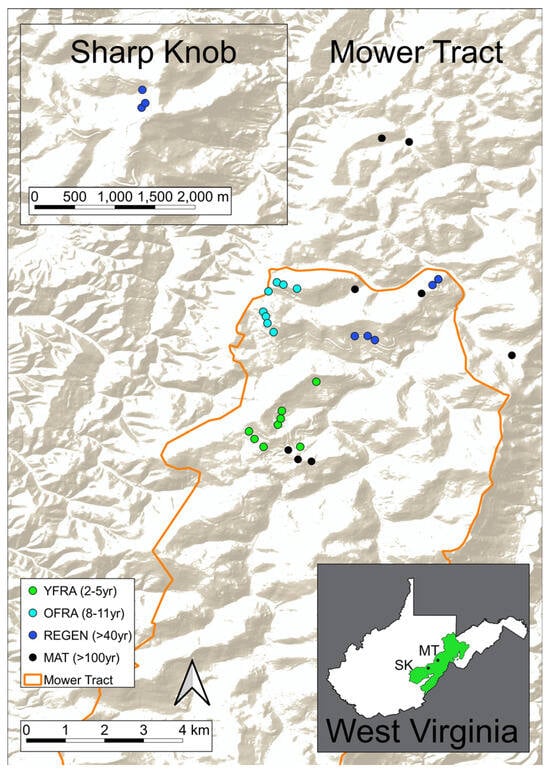
Figure 1
Open AccessArticle
Climate Variability, Coastal Livelihoods, and the Influence of Ocean Change on Fish Catch in the Coastal Savannah Zone of Ghana
by
Johnson Ankrah, Ana Monteiro and Helena Madureira
Water 2024, 16(9), 1201; https://doi.org/10.3390/w16091201 - 23 Apr 2024
Abstract
Coastal zones, despite their contribution to global economies, continue to suffer the negative impacts of climate variability, which limit the livelihoods of people, particularly small-scale fishermen. This study examined climate variability, coastal livelihoods, and the influence of ocean change on the total annual
[...] Read more.
Coastal zones, despite their contribution to global economies, continue to suffer the negative impacts of climate variability, which limit the livelihoods of people, particularly small-scale fishermen. This study examined climate variability, coastal livelihoods, and the influence of ocean change on the total annual fish catch in Ghana’s Coastal Savannah zone. The mixed-methods approach was used to analyze primary data (semi-structured questionnaires and interviews), secondary data (sea surface temperature (SST) and salinity (SSS), and fish catch), and statistical tests (chi-square, binary logistic regression, and multiple regression). Findings revealed a significant increase in climate variability awareness among fishermen, attributed to the influence of broadcast media. However, they lack sufficient information regarding the transformation of cities, the urbanization process, and its impact on the global climate. Increasing temperatures and sea level rise emerged as the most prevalent impacts of climate variability over the past two decades in the zone. Although the fishermen lack awareness regarding the changes in SSS and their effects on fish, the findings of the multiple regression analysis established that changes in SSS exert a more pronounced effect on the decreasing fishing catch in the zone compared to those in SST. Empirical fish catch records supported the fishermen’s claim of a substantial decrease in total fish catch in the zone over the past 20 years. Aside from climate variability impacts, the involvement of many people and light fishing emerged as additional factors contributing to the decreasing fish catch in the zone. High premix fuel prices or shortages and “saiko” activities were the main obstacles that hindered the fishermen’s activities. “Saiko” is an unlawful activity in which foreign industrial trawlers sell fish directly to Ghanaian canoes or small-scale fishermen at sea. The fishermen lack sufficient means of supporting their livelihoods, as there is a lack of viable alternative livelihood options. Additionally, the majority of the fishermen experience symptoms of fever and headaches. The binary logistic regression analysis showed that the fishermen’s income insufficiency could be substantially reduced if they were to have their own houses, canoes, or fish all year. This situation highlights the need for heightened support from policymakers for improved sustainable livelihood prospects as well as health and well-being.
Full article
(This article belongs to the Section Oceans and Coastal Zones)
►▼
Show Figures

Graphical abstract
Open AccessArticle
Spatio-Temporal Characteristics of Land Subsidence and Driving Factors Analysis in Shenzhen
by
Shuanglong Wang, Guoyang Wang, Min Huang, Jun Song, Xiaoyu Yang, Tingyu Zhang, Wenyu Ji, Shuai Zhang, Weili Wu, Chengwen Wei and Jian Xiao
Water 2024, 16(9), 1200; https://doi.org/10.3390/w16091200 - 23 Apr 2024
Abstract
Analyzing land subsidence using Multi-temporal Interferometric Synthetic Aperture Radar (MT-InSAR) technology holds significant importance for the secure development of urban areas. Shenzhen, being a crucial component of the Pearl River Delta, faces the threat of land subsidence, similar to most deltaic cities. Numerous
[...] Read more.
Analyzing land subsidence using Multi-temporal Interferometric Synthetic Aperture Radar (MT-InSAR) technology holds significant importance for the secure development of urban areas. Shenzhen, being a crucial component of the Pearl River Delta, faces the threat of land subsidence, similar to most deltaic cities. Numerous studies have already indicated the presence of severe land subsidence in certain localities of Shenzhen. However, due to limitations in data scope and research methodologies, the comprehensive spatial-temporal distribution of land subsidence across the entire city of Shenzhen remains unclear. This study initially employed MT-InSAR technology to process a total of 534 Sentinel-1A SAR images from three different frames (P11F71, P113F71, P11F65), covering the entire city of Shenzhen. This processing resulted in the generation of subsidence rate maps and subsidence time series. Subsequently, the temporal evolution patterns of the subsidence were analyzed while significant subsidence regions were identified. By integrating information from optical images reflecting human activities on the Earth’s surface, the study deduced the subsidence mechanisms in various significant subsidence areas. Research findings indicate that land subsidence in Shenzhen is primarily caused by construction activities, with a concentration in the western coastal areas of Shenzhen, reaching a maximum rate of 80 mm/yr, located at the estuary of Dongbao River (113.770385, 22.745305). The cumulative subsidence from March 2017 to June 2023 amounts to 500 mm. The expansion of the Qinglinjing Reservoir has led to an increased demand for water, resulting in a significant rise in formation pressure and subsequent land subsidence. InSAR land subsidence monitoring and analysis in urban areas can address the spatial and temporal resolution limitations of traditional subsidence monitoring methods, providing effective recommendations for widespread subsidence prevention and control.
Full article
(This article belongs to the Special Issue Remote Sensing for Topography, Deformation and Flooding Mapping in Coastal Environment)
►▼
Show Figures
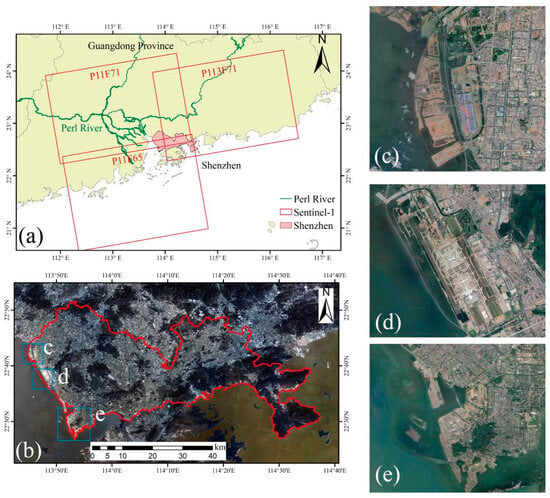
Figure 1
Open AccessArticle
Mercury Bioconcentration and Translocation in Rooted Macrophytes (Paspalum repens Berg.) from Floodplain Lakes in the Araguaia River Watershed, Brazilian Savanna
by
Lucas Cabrera Monteiro, Ludgero Cardoso Galli Vieira, José Vicente Elias Bernardi, Ygor Oliveira Sarmento Rodrigues, Lígia Pereira Borges de Mesquita, João Pedro Rudrigues de Souza, Guilherme Sena, Iuri Aparecida da Silva Oliveira, Cássio da Silva Cabral, José Francisco Gonçalves Júnior, Jurandir Rodrigues de Souza and Wanderley Rodrigues Bastos
Water 2024, 16(9), 1199; https://doi.org/10.3390/w16091199 - 23 Apr 2024
Abstract
Macrophytes are fundamental photosynthetic organisms for functioning freshwater ecosystems, identified as potential bioindicators of mercury (Hg) in the environment. We quantified the concentrations of total Hg (THg) in water and macrophytes (Paspalum repens Berg.) from 17 lakes on the Araguaia River floodplain,
[...] Read more.
Macrophytes are fundamental photosynthetic organisms for functioning freshwater ecosystems, identified as potential bioindicators of mercury (Hg) in the environment. We quantified the concentrations of total Hg (THg) in water and macrophytes (Paspalum repens Berg.) from 17 lakes on the Araguaia River floodplain, aiming to compare the bioconcentration factor (BCF) in the aerial tissues and roots; evaluate the translocation factor (TF) between plant tissues; and assess the influence of environmental factors and land use on THg concentrations in water and macrophytes. The BCF was significantly higher in roots (1.29 ± 0.32) than in aerial tissues (0.41 ± 0.34), with low TF between plant tissues (0.14 ± 0.06). The highest concentrations of THg in water were determined in lakes with higher land use intensity and a pH close to neutral, indicating the transport of particulate-bound Hg and the immobilization in the water column. In contrast, wetlands were priority areas for the bioconcentration of THg in macrophytes, associated with sulfate, dissolved oxygen, and oxidation–reduction potential in the water. Thus, although P. repens is not a suitable bioindicator of Hg mobilization by anthropogenic land use in our study area, our results suggest the potential of macrophytes as bioindicators of sites that are favorable to Hg methylation.
Full article
(This article belongs to the Special Issue Aquatic Macrophytes and Pollutants: Interactions, Indicator Role, and Phytoremediation Possibilities)
►▼
Show Figures
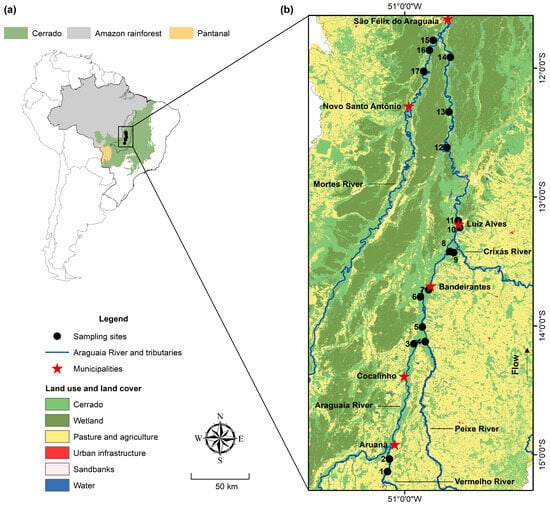
Figure 1

Journal Menu
► ▼ Journal Menu-
- Water Home
- Aims & Scope
- Editorial Board
- Reviewer Board
- Topical Advisory Panel
- Instructions for Authors
- Special Issues
- Topics
- Sections & Collections
- Article Processing Charge
- Indexing & Archiving
- Editor’s Choice Articles
- Most Cited & Viewed
- Journal Statistics
- Journal History
- Journal Awards
- Society Collaborations
- Conferences
- Editorial Office
Journal Browser
► ▼ Journal BrowserHighly Accessed Articles
Latest Books
E-Mail Alert
News
Topics
Topic in
Energies, JMSE, Oceans, Remote Sensing, Water
Energy from Sea Waves
Topic Editors: Daniele Milone, Vincenzo Franzitta, Domenico Curto, Andrea GuercioDeadline: 30 April 2024
Topic in
Materials, Minerals, Processes, Sustainability, Toxics, Water
Removal of Hazardous Substances from Water Resources
Topic Editors: Gujie Qian, Yan Zhou, Weifeng ChenDeadline: 20 May 2024
Topic in
Diversity, Environments, JMSE, Toxics, Water
Coastal Macro-, Meso-, and Microplastic Pollution: Effects on the Health of Humans and Ecosystems
Topic Editors: Alba Ardura Gutiérrez, Sara Fernandez FernandezDeadline: 30 May 2024
Topic in
Agronomy, Climate, Earth, Remote Sensing, Water
Advances in Crop Simulation Modelling
Topic Editors: Mavromatis Theodoros, Thomas Alexandridis, Vassilis AschonitisDeadline: 15 June 2024

Conferences
Special Issues
Special Issue in
Water
Eutrophication and Harmful Algae in Aquatic Ecosystems
Guest Editors: JoAnn Burkholder, Patricia GlibertDeadline: 26 April 2024
Special Issue in
Water
Implications of Climate Change on the Sustainable Management of the Water–Forest Nexus
Guest Editors: Asia Khamzina, Florent NoulèkounDeadline: 30 April 2024
Special Issue in
Water
Wastewater-Based Epidemiology (WBE) Research
Guest Editors: Peng Du, Phong ThaiDeadline: 25 May 2024
Special Issue in
Water
Nitrification-Denitrification Processes in Bioreactors for Wastewater and Sludge Treatment
Guest Editors: Antonio Albuquerque, Qiulai HeDeadline: 31 May 2024
Topical Collections
Topical Collection in
Water
Water Policy Collection
Collection Editors: Meri Raggi, Davide Viaggi, Giacomo Zanni




